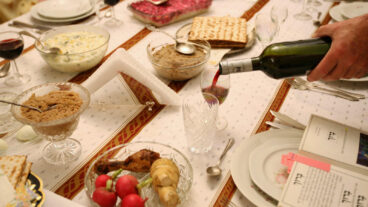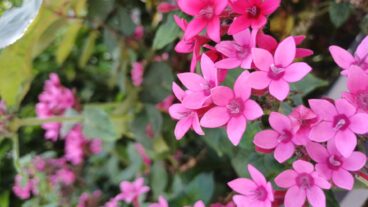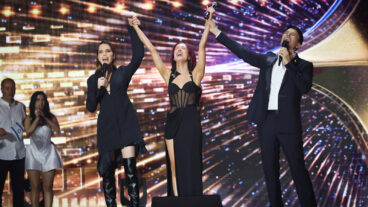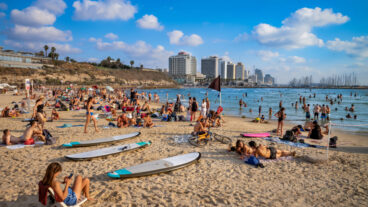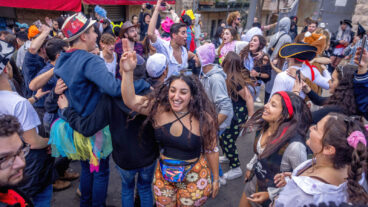Michelle Shapiro: Here we have wonderful equipment geared specifically for kids with special needs, but also tremendously exciting for typical children.When Bella Tsur was a little girl, her dream was to go on a carousel and spin around and around and around, just like other kids. But the Israeli girl had had polio, and couldn’t negotiate playground equipment.
In Bella’s youth climbing on a jungle-gym, or up the stairs of a slide, bouncing on a see-saw and swinging through the air were all out of reach of special needs children. No more. Today, in a specially modified, safe and aesthetically beautiful environment in Ra’anana, any child can conquer the world.
“Our playground in the park is unique,” says Michelle Shapiro, Occupational Therapist at Beit Issie Shapiro, the Ra’anana Center for special needs children, who was in charge of the design and planning of the playground. “Here we have wonderful equipment geared specifically for kids with special needs, but also tremendously exciting for typical children. So we serve a double function – provide great fun for everyone, and create an integrated environment to change perceptions. Children get to meet each other, play with each other, and learn about each other.”
The playground is the brainchild of Naomi Stuchener, president of Beit Issie. Some twelve years ago she found a donor in the US, but the project initially floundered. Ze’ev Bielsky, the then-mayor of Ra’anana, stepped in with a donation of 12 acres of parkland right next to the lake in his town’s centerpiece park.
The Jewish National Fund in the United Kingdom provided the funding, Shapiro recruited community social workers, professional landscape designers, parents of special needs kids, educationalists, physiotherapists, Occupational therapists, speech therapists and consulted with blind, deaf and motorically handicapped children to discover their requests.
“What they wanted most was to feel normal,” explains Shapiro. The playground goes a long way to make this dream come true.
An enormous cover, in sky blue, was specially created to provide shade while letting in cool breezes. The floor is spongy and green as grass, and the thickness varies under each play station, to cushion falls from different heights. A ‘clock-like’ system of positioning the equipment aids blind children to find their way, and different surfaces and colors help the sight-impaired to feel independent.
Neutral colors were chosen with children with Sensory Modulation Disorder in mind, so as not to overstimulate them. Linear swings and ‘up and down’ swings work on different areas in the balance system, the climbing frame has a ramp for wheelchairs, and a transfer platform where kids can move from their chairs and slide down to the ground alone. Water fountains are adapted to create different splashing sounds, so blind children can orientate themselves without help. Attractive, comfortable benches without arm-rests dot the area, providing seating for wheelchair bound children who can slide onto them from their chairs. Toilets are wheelchair accessible, as are outside drinking-taps.
A huge ‘Magical Journey’ takes children on wheelchairs or walking frames, sighted or blind, deaf or hearing, on a wonderful tour of nursery-rhyme land, into Goldilocks and the Three Bears’s Breakfast Nook and an Alice-In-Wonderland corner where special paintings make the visitor feel alternatively big and small. Paintings are in 3D, so blind children can ‘see’ through their fingers. A communication board enables kids with speech problems to signal their needs through signs – a toilet, a sandwich, a drink. Even the throne of the ‘King of the Castle’ is specially equipped to hold a wheelchair.
Distorting mirrors are a hit – although the planners were hesitant to install them.
“We thought the children with handicaps might not like to see themselves looking strange – but these mirrors make everyone look different, and equal. Everyone loves them,” says Shapiro. Even the throne of the ‘King of the Castle’ is specially equipped to hold a wheelchair.
In the musical area children can stomp on wooden planks, or ride their wheelchairs over them, creating piano like sounds. The children gave the instruments their names – the ‘boogie’, the ‘kli-don’, the ‘ding-dong’.
A ‘Wall of Feeling’ is geared to teaching typical kids about their handicapped counterparts; there is a fat star and a thin one, a star with glasses, a lonely star, a couple of stars snuggling up together. The wall is geared to provoke discussion about how ‘stars’ cope with their differences. These programs are continued in the little amphitheatre in the park, and in schools, where the rights of special needs children are debated in classrooms.
“We had one incident,” recalls Shapiro, “where a group of blind seven-year-olds wanted to go on the swings, but sighted children were already playing there. We explained this to the children who could see, and they came over to investigate. We saw them discussing the situation earnestly, looking at the sight-impaired children’s eyes, asking them questions. After a few minutes they all walked arm-in-arm to the swings, and played together.”
After the swings they may well have ambled over to the carousel – specially adapted for wheelchairs. Bella Tsur, who never went to a playground as a child, and could not take her own children to one, is looking forward to the day when she and her grandchildren will whirl together on the carousel in this wonderful playground.
(Published originally in ESRA Magazine,
The English Language Community Magazine in Israel. To receive a copy, click here)





